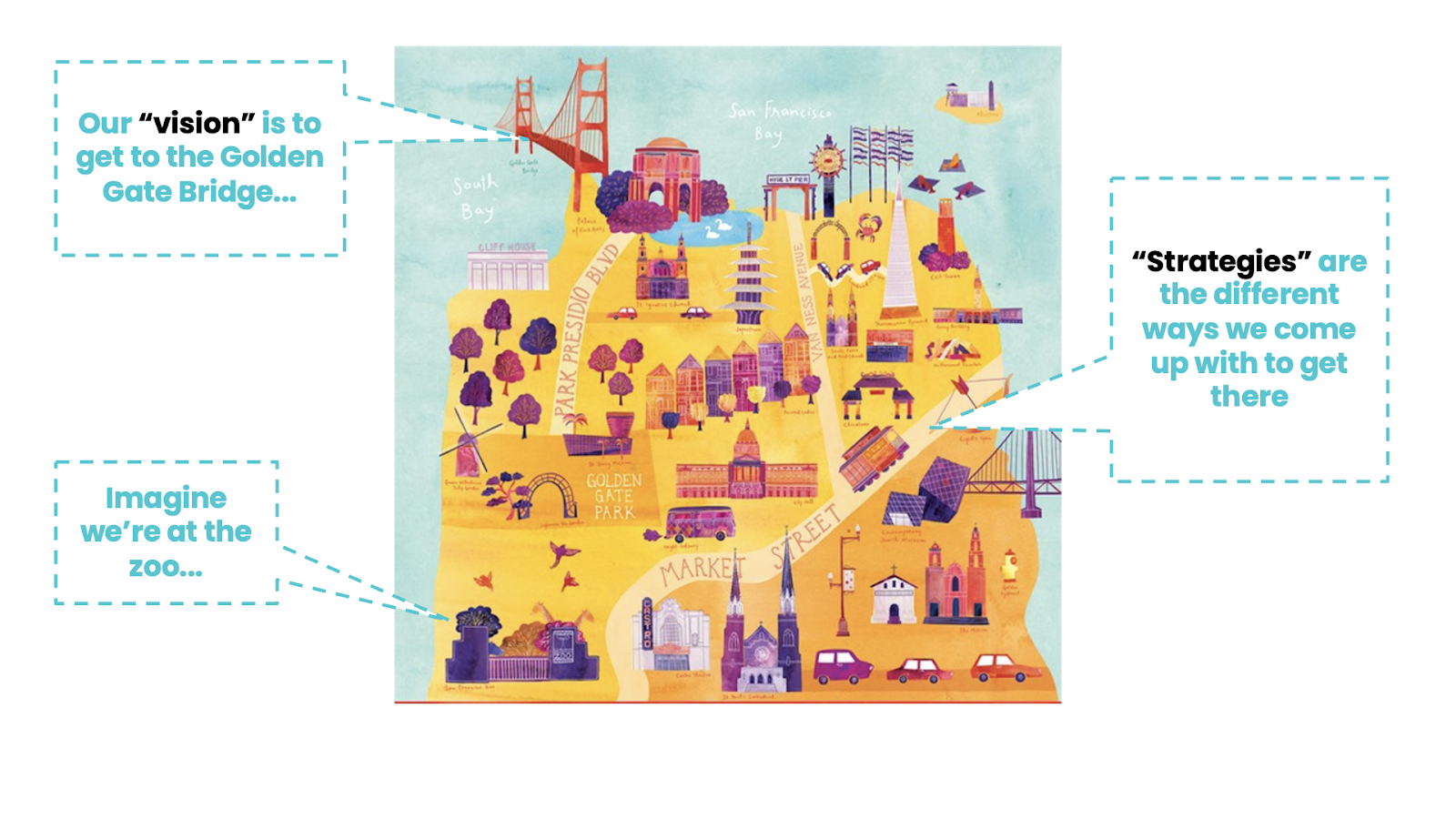4 Misapplications of The Lean Startup and How You Can Avoid Them

Recently, Sanchin Rekhi published “The 4 Major Problems With the Lean Startup Methodology”. His article shares a critique of Lean Startup based on his own startup experience. He summarizes the method’s problems this way:
- It encourages agnostic experimentation instead of starting with a compelling strategy
- It stresses the need for minimum viable products (MVPs), which can lead to failing too fast
- It results in developing incremental products, not product innovations
- It overemphasizes product development instead of a deliberate focus on growth
It would have been better if Sanchin had titled his article “4 Misapplications of the Lean Startup”, as the four problems above are clearly not a result of Lean Startup itself, but rather are driven by misconceptions about it. In this post, we’ll respond to these misapplications by sharing best practices so you can avoid these mistakes.
Here’s a summary of best practices that we’ll dive into in more detail below:
- Set your vision and strategy first, as only then will you know what experiments to run
- Focus on what you learn from testing MVPs, not on whether customers like them or not
- Apply Lean Startup when facing customer, technical, or business model uncertainty
- Don’t forget the Growth Hypothesis
Before we take on each of these, let’s take a step back and look at what Lean Startup is designed to do.
The Lean Startup (2011) defines a startup as any human institution designed to create a new product or service under conditions of extreme uncertainty. Lean Startup itself is a system for methodically addressing uncertainty through rapid iteration and market learning.
If you are building a new product and are certain of what you need to build, then you should just go ahead and build it!
Startups, however, by definition face uncertainty about what to build. These uncertainties can be distilled into assumptions we have about, for example, what customer segments to target, what problem is worth solving for customers, how customers will react to our product, how we will grow beyond early adopters, etc.. If our assumptions are wrong, then we will waste time and resources scaling the wrong thing. Lean Startup experiments help validate (or invalidate) what we call the leap-of-faith assumptions that are critical to the success of our new product.
Startups are a high-risk proposition. What we are attempting to do using Lean Startup is increase our odds of success.
Now, let’s dive into the Lean Startup best practices that we highlighted above. We’ll be using “classic” examples from Dropbox, Zappos, and Intuit to demonstrate these best practices below, as most readers are aware of them. For additional and more recent examples from other companies, check out the Lean Startup Co. blog.
1. Set your vision and strategy first, as only then will you know what experiments to run
In his book The Lean Startup, Eric Ries states: “Startups have a true north, a destination in mind: creating a thriving and world-changing business. I call that a startup’s vision. To achieve that vision, startups employ a strategy, which includes a business model, a product road map, a point of view about partners and competitors, and ideas about who the customer will be. The product is the end result of this strategy.”
Lean Startup makes a distinction between vision and strategy. A vision is the overarching goal we are aiming for, including the reason we’re creating the product. The vision serves as our guiding star and is (hopefully) inspired by compelling insight. The vision is meant to be a constant in our startup journey.
A strategy, on the other hand, is a possible course of action for attaining our vision. It turns out that you can probably come up with dozens of strategies for attaining any vision. We don’t want to get stuck on the first strategy if it’s based on bad assumptions. Instead, we want to iterate our strategy based on what we learn from running lean experiments. The reason we run experiments is to test our current strategy and decide whether or not to stick with that strategy or pick a better one.

For example, Zappos founder Nick Swinmurn had a vision of building an online shopping site with a great selection of shoes. With this vision as his true north, he began running lean experiments to learn what customers valued that consisted of listing inventory and fulfilling orders from local shoe stores. Based on what he learned, he arrived a strategy that included offering outstanding customer service, which to this day remains the central component of Zappos’ brand.
Note that a strategy centered around customer service is not the only strategy Nick could have picked to achieve his vision. Other alternatives could have included offering the lowest price, flagship brick and mortar stores, or distributing companion glossy paper catalogs.
2. Focus on what you learn from testing MVPs, not on whether customers like them or not
A well-designed experiment provides learning about the validity of specific assumptions we have made. Treating the MVP as some mini-version of our ultimate product and then giving up if customers don’t like it is a certain path to “failing too fast”. Instead, if we are being truly systematic in what we are testing, our experiment vehicles will help us learn how to improve our ideas.
When Dropbox co-founder Drew Houston wanted to test market demand beyond early adopters for a seamless file-sharing tool, his team’s MVP was not a minimal version of the Dropbox product. Instead, they recorded a low-production three-minute video demo which drove thousands of people to sign up for their beta waiting list.
As Eric Ries states in The Lean Startup, “The goal of the MVP is to begin the process of learning, not end it.” In practice, there isn’t just one MVP, there are as many MVPs as needed to test critical assumptions.
In fact, some of the most successful experiments are when zero customers like an MVP, but in the course of running the experiment a startup team validates or invalidates key assumptions and learns why zero customers liked it.
For more on MVPs, read Hugh’s guide to types of MVPs or Ben’s recent post on MVP testing.
3. Apply Lean Startup when facing customer, technical, or business model uncertainty
As mentioned above, Lean Startup is a system for methodically addressing uncertainty through rapid iteration and market learning. The more innovative your startup idea is, the more uncertainty you are likely to face about how customers will behave, what’s technically feasible, and what business model would be most effective.
While there have been many successful applications of Lean Startup to product line extensions and new features on existing products, Lean Startup is most useful when applied to conditions of extreme uncertainty about all aspects of the startup business.
There are three kinds of uncertainty: Technical (can we build it), Customer (if we build it, will people buy/use it), and Business Model (will we be able to make money). Startups should use Lean Startup in the areas where they have the biggest questions. This reduces waste and saves money and time.
In 2009, Intuit, the maker of TurboTax, was looking for solutions for simple tax filers, many of whom would still go to expensive tax stores. Lean experimentation led to not an incremental solution, but a non-obvious breakthrough: customers could use their mobile phones to take a photo of their W2 forms to upload into a new tax prep app instead of typing all the information in. Validation from experiments with real customers overcame organizational skepticism that anyone would want to use their phone to do their taxes.
Especially if your idea is massively different from anything your customers have experienced, you will be well served by thinking about what assumptions you are making for your idea to work. You’re likely to discover some of your leap-of-faith assumptions have nothing to do with the most innovative aspects of your idea (for instance, assumptions about customers’ points-of-need or who makes the purchasing decision).
Note that in the example above, Intuit didn’t ask customers what they wanted. Lean Startup never has been and never will be “asking customers what they want and then building that”. Instead, Intuit understood a customer need and experimented with different solutions for addressing it. Lean experiments should measure real customer behavior. We aspire to get as close as possible to a genuine real-world reaction to your idea.
4. Don’t forget your Growth Hypothesis
The Lean Startup doesn’t just focus on product development. Eric Ries says every startup’s grand vision can be broken down into the value they expect their product to deliver and how new customers will discover their product. Value hypotheses test whether a product really delivers value to customers. Growth hypotheses test ways in which your product will acquire customers.
Here’s an excerpt from Eric Ries’ book The Startup Way:
| Definition | Examples | Questions to Ask | |
| Value Hypothesis | Tests whether your new product or service will create value for the customer | Example 1
We believe that people will use the new IT system that’s replacing the old one. Example 2 We believe the hospital will buy our new MR device. |
|
| Growth Hypothesis | Tests how new customers will adopt the product or process | Example 1
We believe we can set up a distribution channel that beats our competitor’s. Example 2 We believe the new system can be rolled out across multiple regions. |
|
From: The Startup Way by Eric Ries.
When Zappos’ Nick Swinmurn was fulfilling orders from local shoe stores, he was testing the Value Hypothesis that customers who ordered shoes from his online store would be delighted with the experience.
When Dropbox published their video demo, they were testing the Growth Hypothesis that there would be high demand for a seamless file-sharing service beyond the group of early adopters with which they had already validated their Value Hypothesis.
In conclusion, The Lean Startup’s biggest gift is guiding us to have humility about our uncertainties and to value learning from customer-based experimentation. Years of successful implementation in organizations of all sizes and kinds have allowed us to move on from the debate about whether to experiment. It is now a standard practice for startups looking to increase their odds of success.
========================
Hugh Molotsi is co-author of The Intrapreneur’s Journey, with Mjumo Mzyece, Diran Soumonni, Jeff Zias. The book is about how companies can drive growth by empowering employees to work on their own ideas. Our soon-to-be-released second edition includes new African innovation case studies.
Ben Hafele is Managing Director of Lean Startup Co., a product and innovation consultancy that equips clients to systematically vet, shape, and de-risk new business opportunities.
